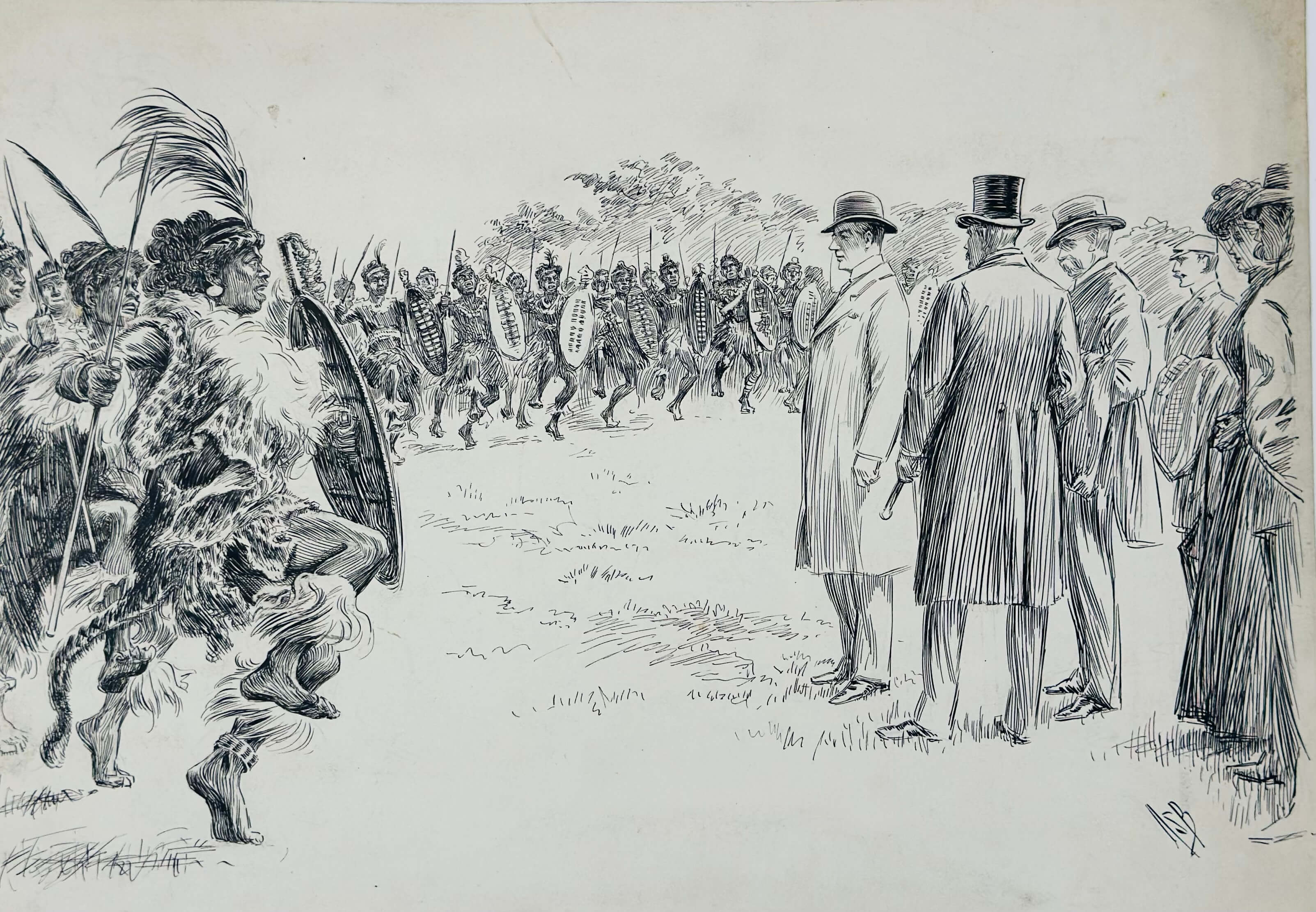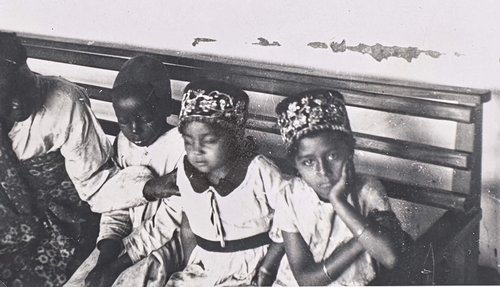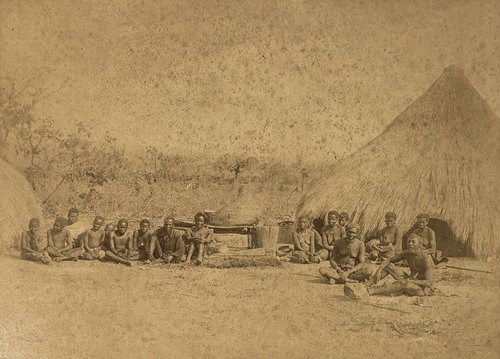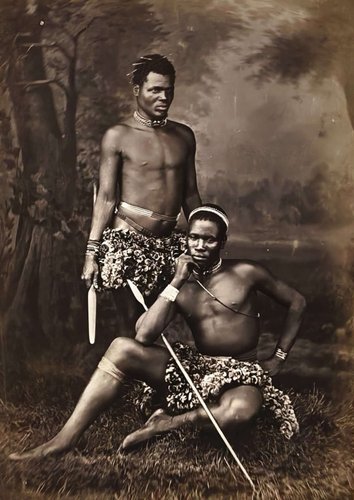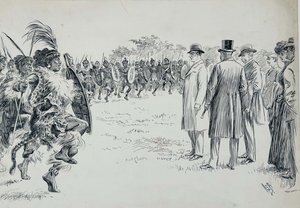
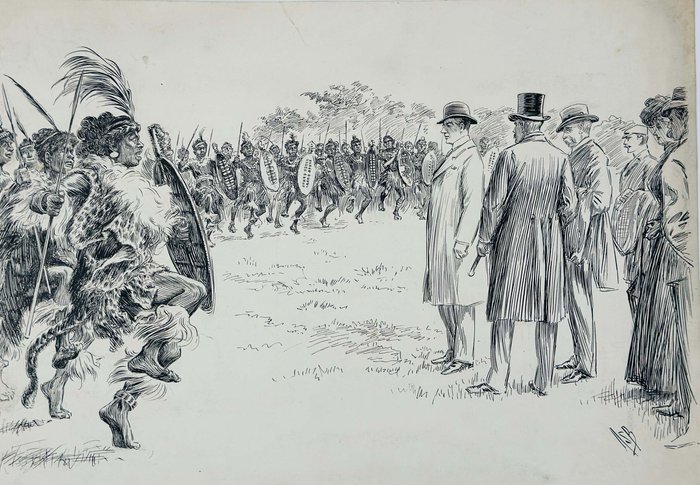
#MC58
1903
Ink on paper, ca. 24,5x35 cm (ca. 9 ¾ x 13 ¾ in). Signed in ink in the right lower corner, the remnants of a printed title (cut out of the magazine) tipped to the lower edge. Ink stamp “6 Feb 93” and pencil caption “Chamberlain & Natives in Africa” on verso. A very good drawing.
This interesting drawing shows one of the most influential British politicians of late 19th – early 20th centuries – Joseph Chamberlain (1836-1914). The drawing was taken during Chamberlain’s official visit to South Africa while he was the State Secretary for the Colonies. Chamberlain was in control of the British military actions during the Second Boer War, and his tour across the Imperial colonies in South Africa (Cape, Natal, Transvaal and Orange River) was meant to politically stabilize the region.
This ink sketch shows the stark contrast between the Zulus and Chamberlain’s group as they meet in an open African field.
“Chamberlain visited South Africa between 26 December 1902 and 25 February 1903, seeking to promote Anglo-Afrikaner conciliation and the colonial contribution to the British Empire, and trying to meet people in the newly unified South Africa, including those who had recently been enemies during the Boer War. In Natal, Chamberlain was given a rapturous welcome. In the Transvaal, he met Boer leaders who were attempting unsuccessfully to alter the peace terms reached at Vereeniging. The reception given to Chamberlain in the Orange River Colony was surprisingly friendly, although he was engaged in a two-hour argument with General Hertzog, who accused the British government of violating three terms of the Treaty of Vereeniging <…> During the tour, Chamberlain and his wife visited 29 towns, and he delivered 64 speeches and received 84 deputations” (Wikipedia).
Alexander Boyd was a “British artist and illustrator who worked as a Punch artist for many years. He and his wife, Mary Stuart Boyd, visited New Zealand about 1898 and he illustrated his wife's book Our Stolen Summer: the Record of a Roundabout Tour, 1900 with 170 pen and ink sketches. They returned to New Zealand about 1920 and settled in Takapuna, Auckland. Exhibited with ASA in 1921–29” (Nineteenth Century New Zealand Artists: A Guide & Handbook. Christchurch, 1980. P. 50).

